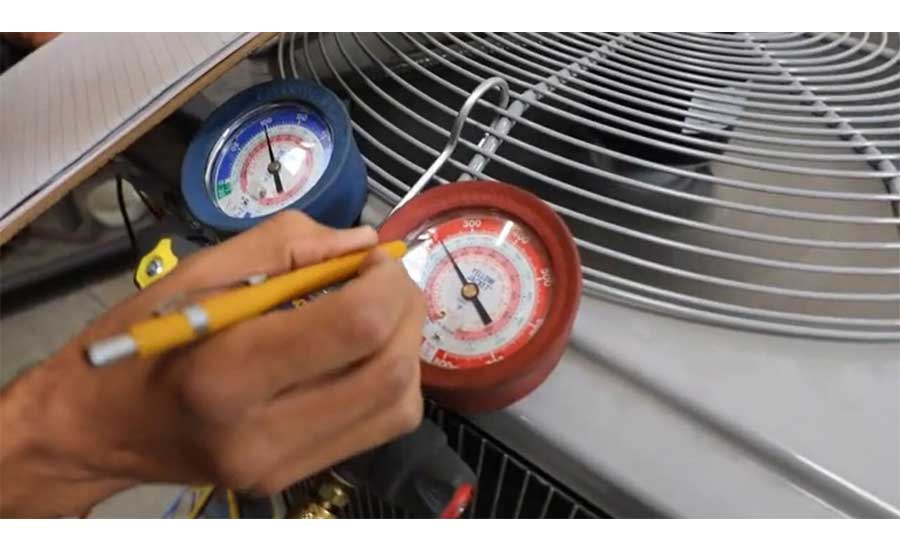HVAC contractors know how important successful troubleshooting is. An incorrect diagnosis will lead to the wrong “solution,” meaning that customers will pay for service and equipment that does not fix the core issue. This leads to upset customers, perhaps even leading to distrust that prompts them to search for an HVAC provider elsewhere.
HVAC contractors also know how important efficient troubleshooting is. Ultimately, a correct diagnosis is the most important, but a technician who spends significantly too long trying to find the problem costs the contractor time and money.
Contractors want both timely and successful troubleshooting. Experience helps technicians achieve both, although some employees with years of service history may have also picked up some bad habits along the way. Younger technicians could benefit from guidance in troubleshooting as well.
At the 2021 National HVACR Educators and Trainers Conference, hosted by HVAC Excellence, Tony Gonzalez, technical training manager at Fieldpiece Instruments Inc., shared advice on troubleshooting. In his session, “System Troubleshooting and Service: Better and Faster Than Ever Presentation,” Gonzales offered a strategy for guiding technicians through a successful troubleshoot.
“To become a good system troubleshooter, you need to go in with a plan,” said Gonzalez. He first explained that a service strategy breaks down into four very simple steps: understand the problem, identify the problem, correct the problem, and test system operation. But, as technicians know, servicing equipment is more complex once you get to the field.
Understand the Problem
Technicians first must ensure that they properly grasp why the customer called. The customer knows something is wrong with the system, and they have a much better idea of how the system has been acting over its lifespan, as well as the comfort (or lack of comfort) in their space.
Gonzalez said that the key is to ask good, thoughtful questions, and to then allow the customer to express what they have experienced with their system recently. Technicians should allow them the time they need to describe what has been happening, instead of interrupting them.
“Most importantly, we listen,” he said. “Because the words they share with us are going to give us clues and indications to where the problem could be in the system.”
Identify and Fix the Problem
After understanding the problem comes identifying it, where good troubleshooters show their skill and expertise.
Visually inspecting the system for mechanical issues comes first. This could reveal root causes such as dirty condenser coils, dirt filters, or leakages in ductwork. A good, detailed visual inspection may help the technician identify the problem with ease.
If a visual inspection does not reveal any clear causes, technicians can begin to take measurements. Taking the easiest measurements first is good practice, said Gonzalez, such as beginning with airflow measurements if it makes sense (ex: delta T across the evaporator coil, total external static pressure test, etc.). A quick ΔT measurement could unveil an airflow problem. Electrical measurements can also be taken, testing things like power coming in, capacitors, running amps, voltages, etc.
“If we still haven’t found the problem, and if it makes sense based on what the customer is experiencing, we can start measuring pressures and temperatures and checking the refrigerant charge,” he said.
Whatever the customer described in the first step should be used to inform where the technician is looking for a problem.
The most challenging part of troubleshooting/service is often finding the problem, so once it has been identified, technicians can move on to solving it. This entails either repairing the problem-causing piece of equipment or replacing it entirely.
Test System Operation
“Sometimes the last step is skipped because we have too many jobs to do or we’re just not feeling it,” Gonzalez said. “But it’s imperative that after we perform a fix, we test system operation. We want to confirm that we found the root cause, and the only way to do that is to test the operation.”
The testing will confirm not only that the problem was diagnosed correctly, but also that it was properly solved. Contractors would do well to repeatedly affirm the importance of technicians confirming that their work was done correctly, as this saves money and leads to satisfied customers.
The Master Plan
Gonzales shared his simplified outline for guiding technicians through troubleshooting:
- Understand the problem
- Ask good questions about the customer has been experiencing
- Let the customer speak
- Listen to what the customer says and pick up clues for diagnosis
- Identify the problem
- Visually inspect the system
- Look for mechanical issues in the system
- Take measurements
- Measure airflow
- Measure electrical
- Measure refrigerant charge
- Visually inspect the system
- Correct the Problem
-
- Repair or replace the problem-causing piece of equipment
-
- Test System Operation
-
- Confirm root cause of the problem
- Confirm that the repair/replacement has solved the issue
-











